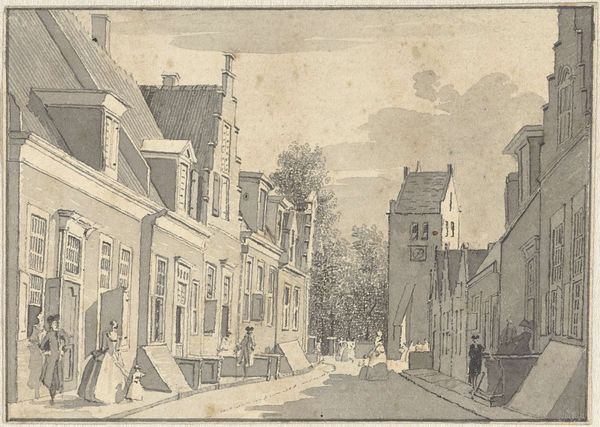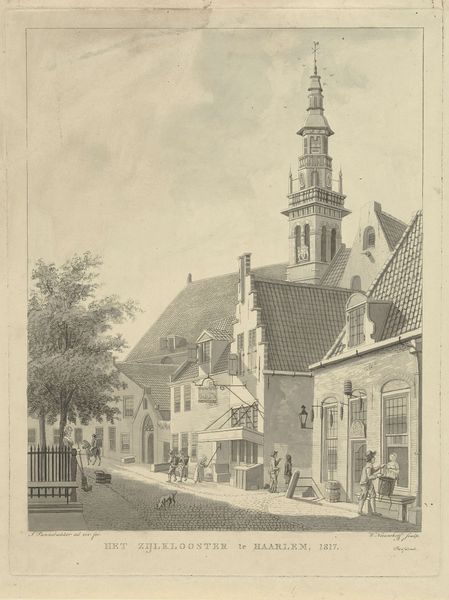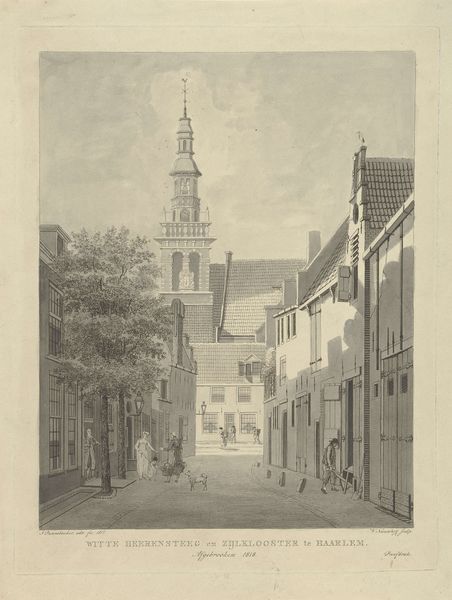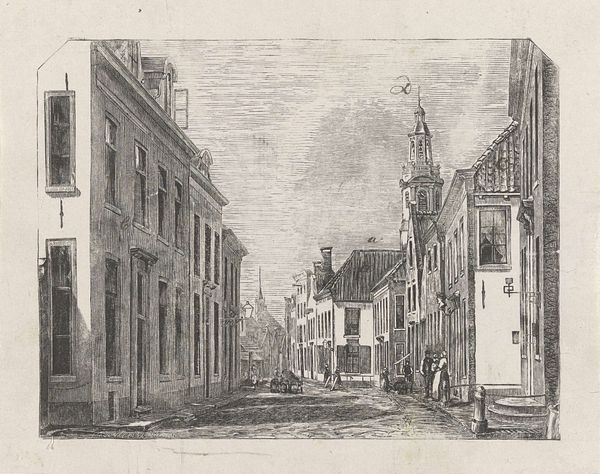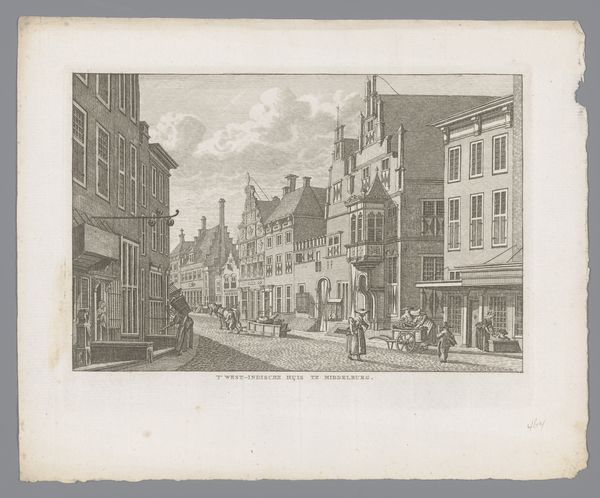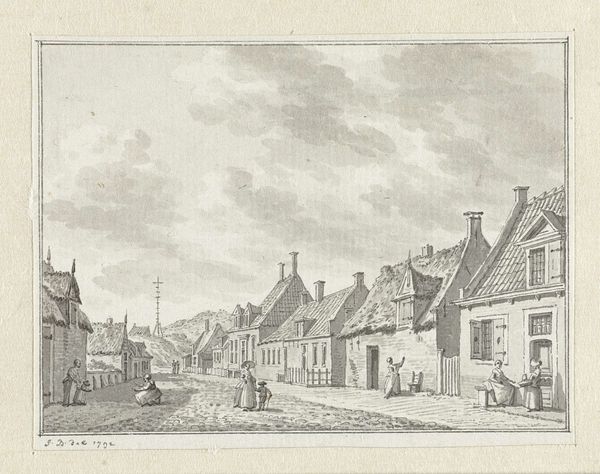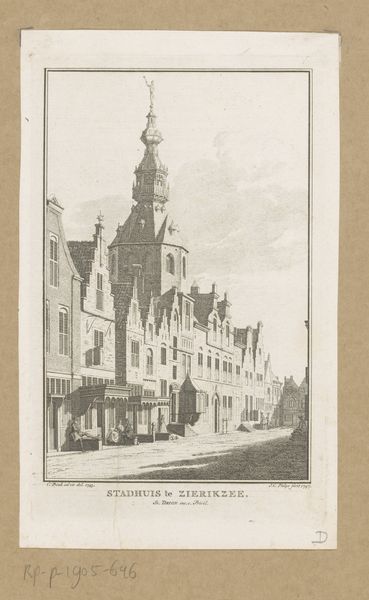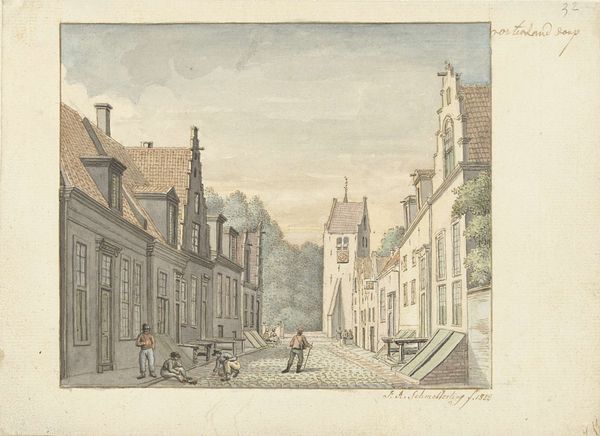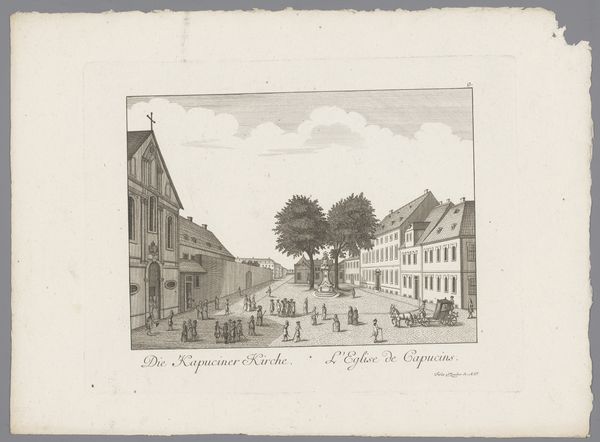
Straat te Alkmaar met de Grote kerk in het verschiet Possibly 1839
0:00
0:00
drawing, pencil
#
drawing
#
pencil sketch
#
landscape
#
perspective
#
pencil
#
architecture drawing
#
cityscape
#
street
#
realism
Dimensions: height 108 mm, width 99 mm
Copyright: Rijks Museum: Open Domain
Editor: Here we have Hendrik Abraham Klinkhamer's pencil drawing, "Straat te Alkmaar met de Grote kerk in het verschiet," possibly from 1839. It's currently held at the Rijksmuseum. I find the rendering of the streetscape and the receding perspective very captivating, it lends an intimate, hushed atmosphere. How do you interpret this work? Curator: What I immediately see is the sophisticated manipulation of light and shadow, essential components to its compositional integrity. Note how Klinkhamer uses the tonal gradations of the pencil to model form and depth, almost abstractly. The linearity suggests careful structuring. Do you perceive a focal point in the composition beyond the church in the background? Editor: Perhaps the figures in the foreground provide some focal point? Though, I find my eye moves quickly towards the church. Curator: Precisely. But let us delve deeper into the formal elements: the repetition of the vertical lines in the architecture plays with depth and proportion; and if we engage a semiotic analysis, we can say that they constitute rhythm and stability, perhaps alluding to an unwavering societal structure in Alkmaar. Also consider the artist's choice to restrict the palette to shades of grey: what kind of aesthetic impact might that have? Editor: That is really interesting. By restricting color, it really brings focus to the composition. Perhaps the tonal quality echoes the quiet mood? Curator: Indeed! And the very grain of the paper – the materiality of the art – acts as a kind of textural counterpoint to the otherwise smooth lines. It is a carefully constructed visual dialogue. Editor: I see now how it is so carefully arranged with tone and linearity, much more than just a mere street view! Thanks for pointing this out. Curator: A deeper look reveals complex constructions in simplicity.
Comments
No comments
Be the first to comment and join the conversation on the ultimate creative platform.
